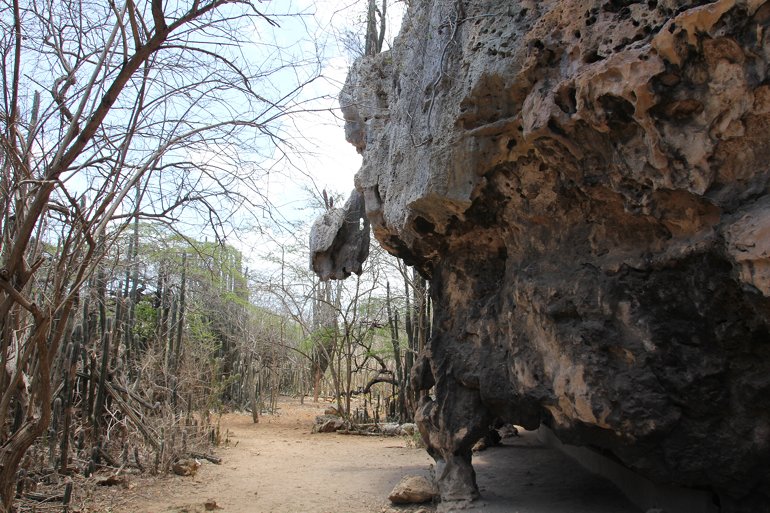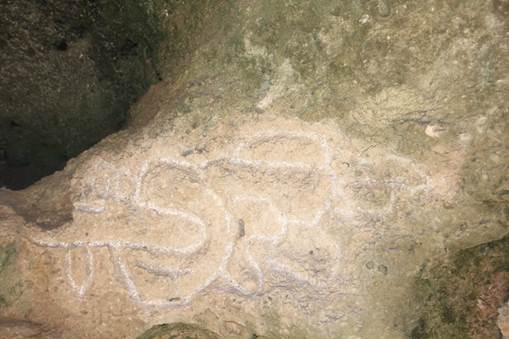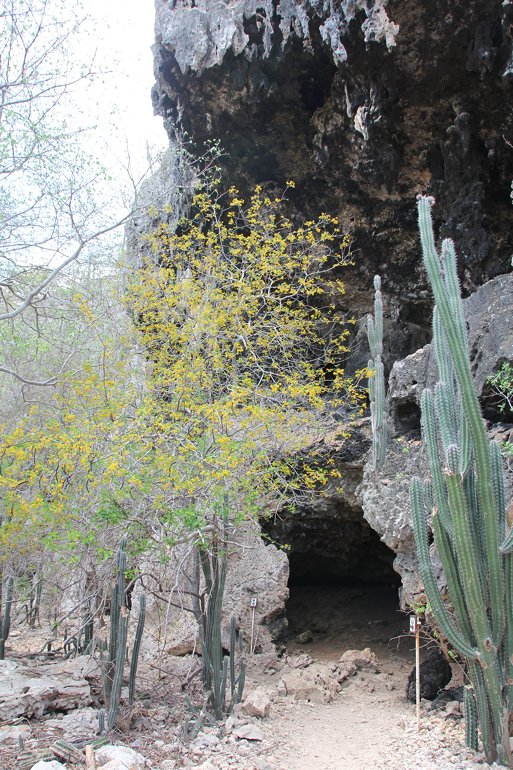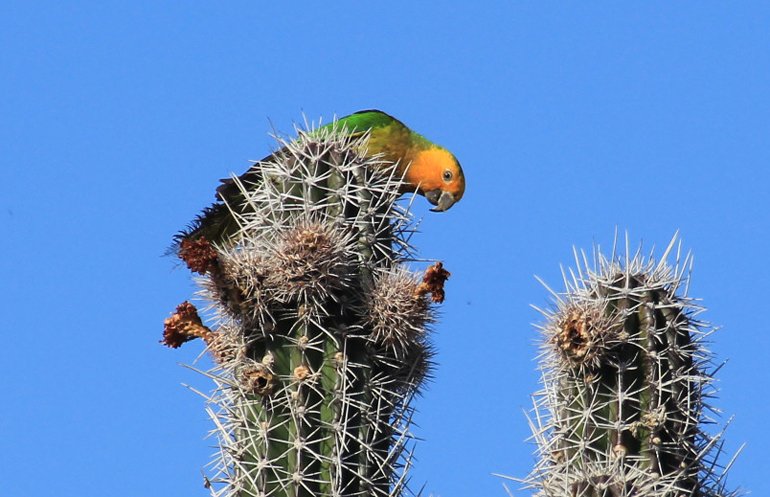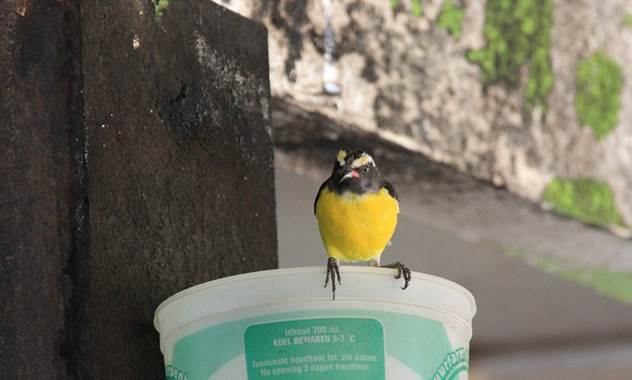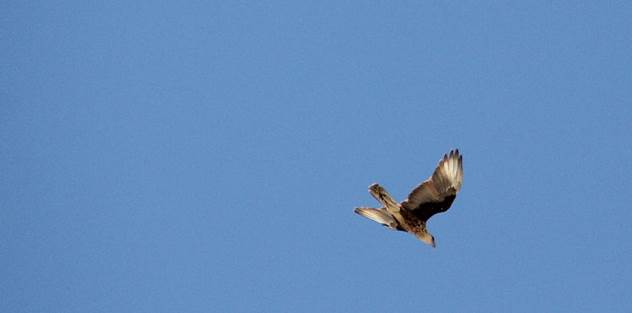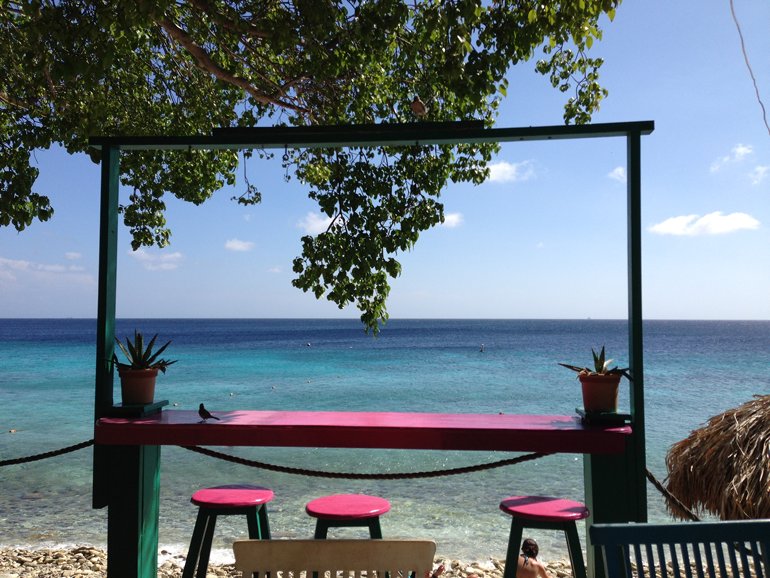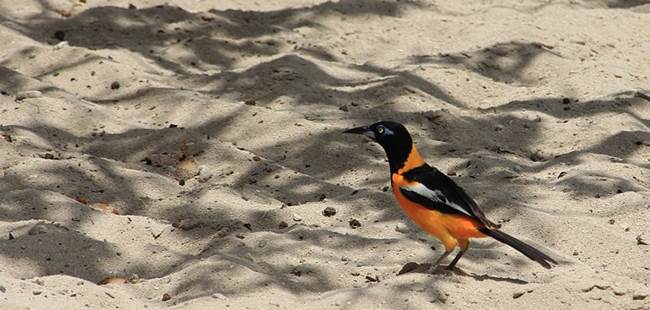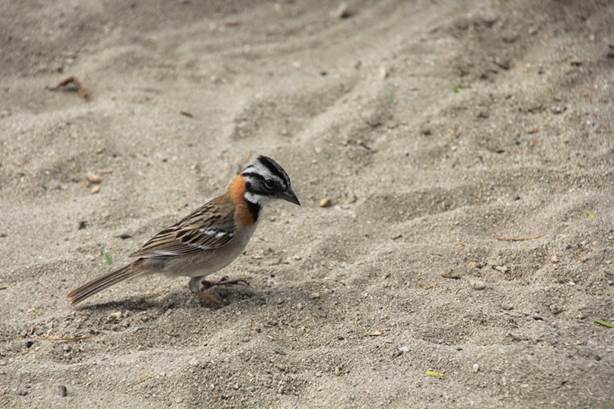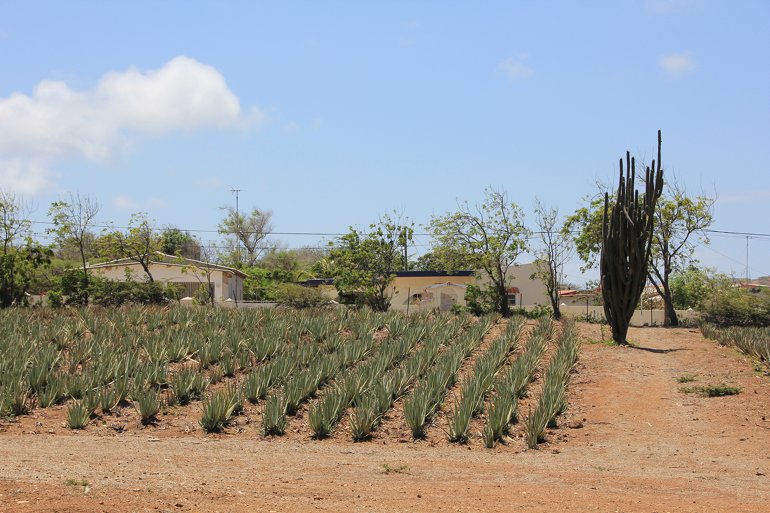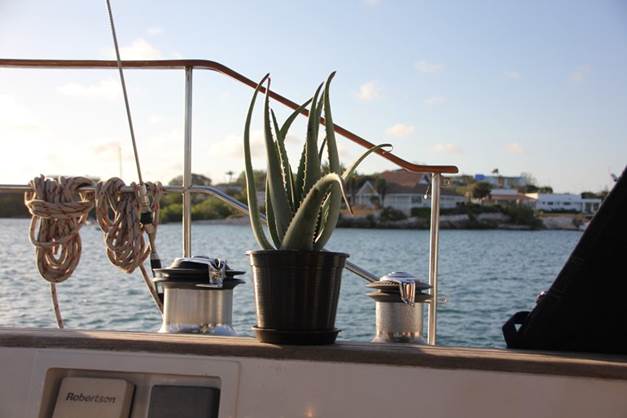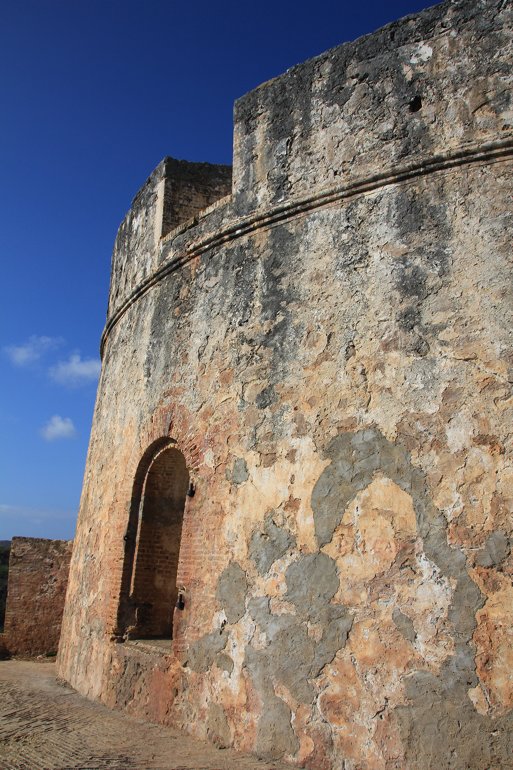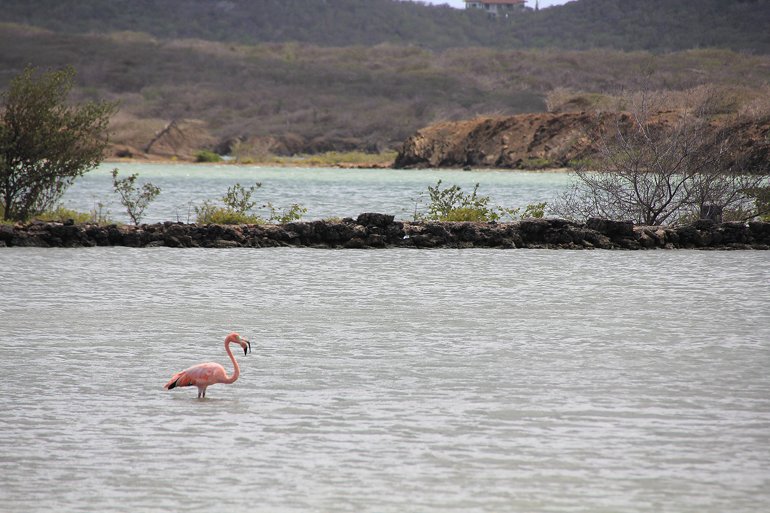Exploring Curacao

With air-con working nicely in the hire car (it’s 32 degrees outside) we headed off around the island. We found purely by chance the Hato Caves, 300,000 year old limestone caves which are absolutely stunning inside. The area is of course protected and you can only enter with a guide and a handful of other ‘tourists’, not something we really enjoy but it was so worth it. Unfortunately we were not allowed to take photos inside, other than one area which wasn’t spectacular, so my photos are from outside! There are bats living in the caves, the guide did warn us not to look up with our mouths open, I had learnt my lesson since the Booby incident crossing from St Croix to St Thomas. In one area of the caves there are blackened dome areas in the ceiling, supposedly caused by slaves lighting their campfires 250,000 years ago. Mind blowing!
Arawak Indian scribble on the rocks outside.
It was here I noticed the bird life, brown-throated parakeets adorning cactus, bananaquits, yellow finches (I think they may be Saffron finches), and hawks swirling the thermals.
The north of the island has a rugged coastline, the confused sea crashes down on limestone rocks creating caves and blow holes. It was nice to see the island harnessing wind power on this coast too.
The south coast is much more picturesque and calm, many small coves with gorgeous beaches run from Willemstad along to Westpunt which, you’ve guessed it, is the western most point of the island. We made a beeline for Jeremi Baai, of course! Crystal clear water and only a handful of people on the beach.
We snorkelled off the beach, lots of beautiful reef fish were scurrying amongst the rocks lining the bay. It was like a nursery for fish with thousands of juveniles. Then I got stung on the back of the thigh, a nasty jelly had swiped me. Then another, and another. We spotted at least three different types of jellies, from very tiny and hard to spot to the largest one that had a long transparent body with red dots inside the lower part and electrical pulses sparking in the upper section. We carried on regardless but it really is never as good when you have to watch out for - and dodge - these tiny creatures, I don’t like anticipating pain. By the time we got back to the beach we had been stung dozens of times, I seem to react more to them than Jez, with welts coming up all over me like strings of bites. I even had one get in my bikini top and sting me – maybe a twist to the bee sting joke?
It was on the beach that I finally got a photo of a bird that I have seen flitting about the trees, a Troupial. They look a bit like a magpie that’s been tango’d, with stunning blue eyebrows and a beautiful song.
There are lots of these little sparrows too, they are ‘Rufous-Collared’ sparrows and were enjoying crumbs underneath the sun-beds.
Inland, we visited the Aloe Vera Plantation, a small organic farm which not only grows the Aloe but also produces its’ own products called Curaloe. They have a wonderful little shop on site too, and after purchasing some creams and potions and also a potted plant, we had a coffee and cake on their covered terrace overlooking the plantation.
Back towards Spanish Water we followed an unmade road past Caracasbaai (a small bay opposite the dinghy dock) leading to a small fort which was built in the late 1700’s.
I had to be crafty with my photographic shots, as this ‘thing’ is tied up in the bay right in front of the fort, we haven’t quite worked out what it is doing yet but it is a huge eyesore and can be seen right across Spanish Water.
Another small network of unmade roads took us to the point at the entrance to Spanish Water, from this photo you can see the narrow deeper water as dark blue, the pale blue being shallow sandy areas and in the foreground is reef.
Oh, I forgot the Flamingos. We came across a large salt lake with a group of Flamingos in the distance, luckily there were one or two outcasts closer in.
We have been pleasantly surprised with everything we have seen here, the Dutch people are so friendly towards us. We have tried some very good local food on the recommendation of a gentleman on holiday from Amsterdam, who kindly translated the menu for us! Now it’s back to ‘Joy Jobs’ as we are in such a protected anchorage we can get the rest of our maintenance and improvement jobs completed whilst the (currently non-existent) hurricane season goes by. |
